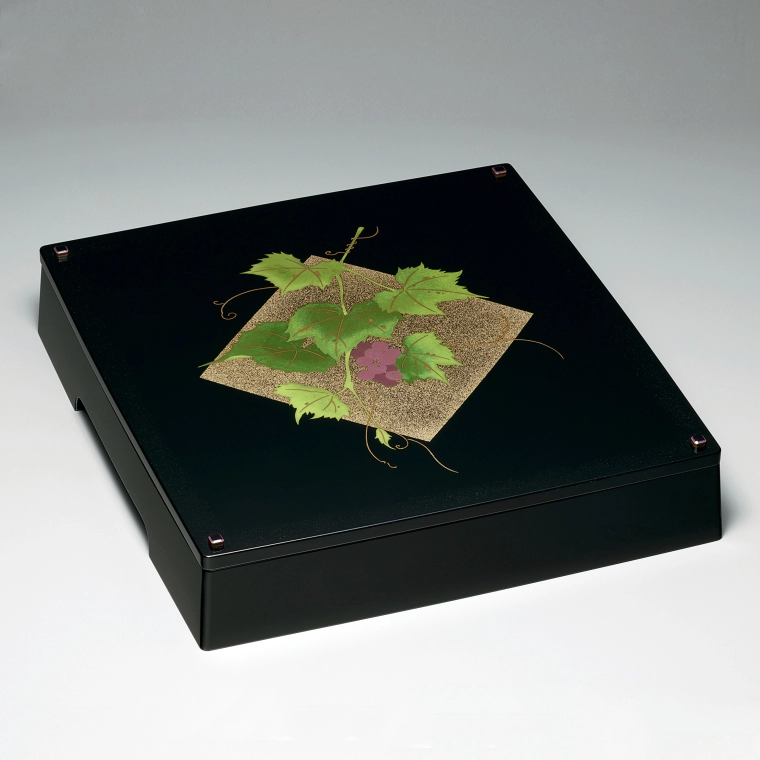Rantai (Lacquered Bamboo) Othello Board with Grape Vine Design
H 5.5 x W 29 x D 31 cm,Year.2023Takashi Tsuji
1973 -- Lacquerware
- Price Range Please Inquire
- Awards at Japan Kōgei Assoc. Exhibitions : 11
Description
-
CategoryLacquerware
-
DimensionsH 5.5 x W 29 x D 31 cm
-
Year presented2023
-
RarityUnique
Techniques Used
Maki-e
Maki-e (literally “sprinkled pictures”) is a representative lacquerware technique that originated in Japan around 1,200 years ago. Maki-e is done by painting lacquer motifs on the surface of a piece using a fine brush and then sprinkling gold powder onto the lacquer before it hardens, producing luxurious decorations.
Mother-of-pearl inlay (Raden)
Mother-of-pearl inlay (Raden) is a decorative technique that uses the iridescent inner layer of abalone shell, turban shell, pearl oyster shell, or other mollusk shells. The technique came to Japan from China 1,300 years ago, and pieces featuring mother-of-pearl inlay are included among the artifacts at the Shōsōin Repository in Nara.
Awards received
- The 40th Lacquerware Traditional Kōgei Exhibition (2023)
- Incentive Award / Takamatsu Art Museum Incentive Award

